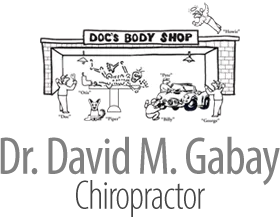Principles of Posture
- Created in Newsletter Library, Breaking Bad Habits
Long ago and far away, a fourth-grade teacher told a student to "stand up straight - you look like a pretzel". The unthinking adult only offered criticism. The child was left to try to unkink himself in the ways that probably caused more structural damage.
Most of us think good posture involves thrusting out the chest and pulling back the shoulders. Informing a person that he needs to improve his posture usually results in a sudden, robot-like increase in stature, the person stiffly incorporating most or all of these muscular stresses.
As a direct result of our weak relationship to sound concepts of what good posture actually is, most people have protruding stomachs, slumped shoulders, and necks that protrude far in front of their body's center. Aside from perpetually unattractive aesthetics, such chronically inefficient posture places ongoing strain on back and neck muscles. Poor posture interferes with normal functioning of your heart and lungs. Metabolic processes deteriorate owing to lack of normal oxygen supply. Poor posture not only leads to musculoskeletal problems like chronic back and neck pain, but also is implicated in gastrointestinal and endocrine diseases and many other disorders.
The welcome news is that achieving good posture is not that difficult. Work is required, of course, as well as consistent attention. But the work is not hard - it is merely new and different, for most of us. As we can guess, the key element in good posture is a straight spine. Importantly, straight doesn't mean rigid.
The main consideration here is how to get your spine straight without tightening all your muscles and holding your breath.1 The solution requires a little imagination. Picture in your mind a string dangling from the sky and attaching it to your sternum - your breastbone. You can name this image "hitching your sternum to a star". You dangle from the string like a puppet.
Also, you imagine that the string is supporting all your weight. As a result, your chest lifts up easily and your spine straightens naturally and smoothly.
Another piece to the posture puzzle is to allow your shoulder girdles to rest on your rib cage. You don't have to press your shoulders down to do this - just don't hold them up. Most of us unconsciously tighten our neck and shoulder girdle muscles all day long. By starting to be conscious of what's going on, we can start letting go of tight shoulder girdle muscles. The shoulders will then gently descend and come to rest on top of the rib cage, where they belong.
By paying attention to these basic postural corrections, over time we can develop a posture that is fluid and efficient. We will appear taller, comfortably reaching our full height with grace and ease. Tension and anxiety begin to reduce and we sleep more restfully at night. Good posture is good health.2,3
1Movahed M, et al: Fatigue sensation, electromyographical and hemodynamic changes of low back muscles during repeated static contraction. Eur J Appl Physiol Sep 30, 2010 (Epub ahead of print)
2Edmondston SJ, et al: Postural neck pain: an investigation of habitual sitting posture, perception of 'good' posture and cervicothoracic kinaesthesia. Man Ther 12(4):363-371, 2007
3Prins Y, et al: A systematic review of posture and psychosocial factors as contributors to upper quadrant musculoskeletal pain in children and adolescents. Physiother Theory Pract 24(4):221-242, 2008
Location
Find us on the map
Office Hours
Our Regular Schedule
Monday:
10:00 am-6:00 pm
Tuesday:
10:00 am-6:00 pm
Wednesday:
3:00 pm-6:00 pm
Thursday:
10:00 am-6:00 pm
Friday:
Closed
Saturday:
Closed
Sunday:
Closed
